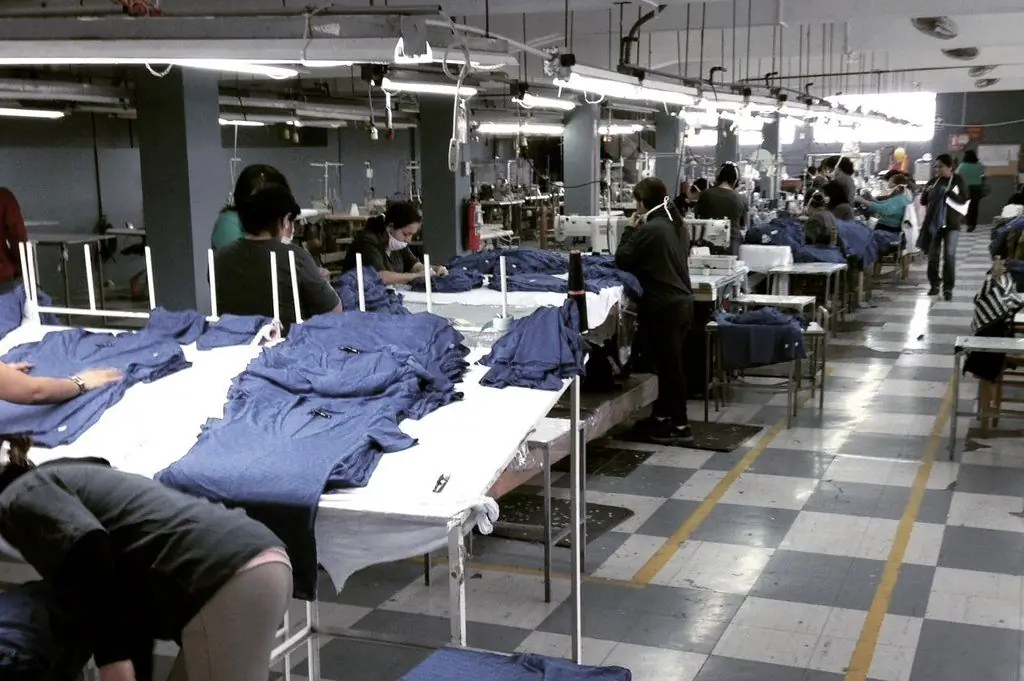2026 Author: Howard Calhoun | [email protected]. Last modified: 2025-01-24 13:10:26
Fictitious capital is a type of capital that is not a means of production, but at the same time brings income. It includes various financial instruments: stocks, bonds, bank deposits and derivative securities. Despite some cacophony, its use for personal gain is not something illegal or immoral. Many use it without even knowing it.
What is this?
Fictitious capital is a contract that gives its owner the right to demand in exchange a certain part of the property or a share of income. It may have material support in the form of a part of property, precious metal or no material support. Transactions with this kind of capital are based on trust and law. For example, today money does not have a gold backing as before, but it is still used as a means of payment. The value of money lies not in the cost of the paper on which it is printed, but in the social contract. According to this social contract, banknotes must be accepted by everyone: other people, shops, markets, banks, etc., located ina certain state. This obligation is fixed by law. Only the Central Bank of the country has the right to print money.

Money in a wallet en titles its owner to purchase certain goods, but at the same time they are not valuable in and of themselves. They acquire value only when they are exchanged for goods and services, and for this the other party must be sure that it will be able to exchange this money for other goods and services, or even for banknotes of other states. The more confidence in the currency, the higher its rate and the more items it can be purchased. Money is the equivalent of value. One of the main problems with the use of fictitious capital is that it can quickly depreciate, since its physical quantity can be unlimited.
What objects belong to such capital
This is not only money, but also stocks, bonds and their derivatives. Anything that gives you the right to earn income. Fictitious capital and the securities market are interconnected, since this type of capital is the main commodity on the stock exchange. It can be expressed in the form of equity and debt securities, as well as in the form of contracts.

Debt securities
These include bonds and IOUs. They are also fictitious capital, since their purchase does not mean the acquisition of a real asset. These are just documents certifying that this or that organization will have to buy back its securities or repay the debt at an agreed price,including interest, for a certain period of time. In the case of debts and debt securities, the fictitious capital received is the difference between the amount given and received.
Equity
Equity securities are shares of open and closed joint-stock companies. Stocks by themselves do not produce anything. They are issued in order to attract funds from investors to expand production or cover debts. They give their owner the right to claim part of the profit in the form of a dividend, as well as participate in management.
Proceeds from the sale of securities at the enterprise are accounted for separately from income from core activities. Although formally they give the investor the right to receive part of the assets in the event of bankruptcy of the enterprise, in reality, the depreciation of shares means a complete or almost complete loss of capital for the investor.

The peculiarity of shares as fictitious capital is that their value does not always reflect the real financial situation of the enterprise. For example, a company's shares are growing, but at the same time, according to reporting data, it has been suffering losses for the last two or three years. There is a distortion of financial information, its separation from the actual state of affairs. Once a stock is listed on the stock market, market factors begin to influence it. There is demand - stocks rise, if there is no demand - they fall in price. In the history of mankind, there have been cases more than once when the difference between the market value of shares and the book value of the company reached a double-digit figure, and then fell sharply,leaving investors without capital investments and with a bunch of debts. Fictitious capital, unlike real capital, expressed in buildings, structures, machine tools, materials, has always been dependent on the behavior of people who often acted irrationally on the stock exchange.
Contracts
Another form of fictitious capital are various derivative instruments - contracts. These instruments include: futures, options, forward contracts, bills of lading. The difference between them lies in what conditions for the transfer of assets are prescribed in them. By and large, they do not give their owner the right to claim income in the form of interest or dividends, but they provide an opportunity to earn by selling a profitable contract or its implementation.

How fictitious capital appeared
The concept itself is inextricably linked with the concept of loan capital and surplus value. This term was introduced by Karl Marx in his Capital. In it, he discussed how loan and interest capital affect the income of manufacturers, prices, and the growth of labor intensity.
In his book, Karl Marx defines fictitious capital as funds that have been spent in the past, and income is expected only in the future. That is, either it has already been used up, or it does not yet exist. At the same time, it is taken into account at several enterprises at once, which leads to several times inflated figures. For example, a bank issued a loan to an enterprise in the amount of one million rubles. This amount is taken into account both at the enterprise and at the bank as actually available. That isthe same million rubles on the balance sheet of the bank and on the balance sheet of the enterprise, which already amounts to two million rubles. The loan may have been spent long ago, but according to the documents, this money exists. The same is true of stocks and bonds and their derivatives. Formally, their owner is a rich person, but what will happen when the price of them falls? After all, by and large, it is kept by promises or high demand for them.

Criticism
Throughout its history (and it exists much longer than the concept itself) fictitious capital has been constantly criticized. Usury and stock trading were considered ignoble occupations. With the development of capitalist relations and industrial production, in which loan and fictitious capital played a special role, criticism only intensified. Credit led to such phenomena in the economy as cyclicality and crises, and it also became one of the reasons for the increase in we alth inequality. This resulted in industrialists and professional stock speculators getting rich faster than the rest of the population. The skewed distribution of we alth in society has led to increased social instability, despite the improvements that progress has brought.
Signs
The main features of fictitious capital, by which it can be distinguished from other types of capital, are:
- Intangible form. It is a document that confirms the right to own or receive an asset.
- Receiving or giving moneyfunds or assets are not in the present tense. If an investor has purchased a bond for a period of three years, then he can return the invested money with interest only after three years. He can sell the bond before this time, but in this case, the investor risks losing part of the income.
- No guarantees. The creditor cannot be completely sure that the debtor will repay the debt. Just like an investor who has invested in a stock cannot be sure that he will receive dividends on it or that it will not depreciate.
- The real value is less than the face value. Paper money itself is worth little, but if the denomination of a bill is one thousand rubles, then it can be exchanged for goods worth up to one thousand rubles.
Fictitious capital always takes the form of a contract. It must be documented for a specific person. For one party, it is an obligation, and for the other, it is the right to demand the fulfillment of this obligation.

The difference between loan and fictitious capital
Loan capital, in fact, is fictitious. Karl Marx wrote about this when he studied the nature of real and fictitious capital. This is one of the earliest forms of capital, which did not disappear with the development of economic relations, but became even more widespread. Today, loans and credits are used not only to buy means of production, but also to expand the sale of expensive goods.
Fictitious capital has a wider meaning and application than loan capital. Unlike loans, objects such asshares, bonds, contracts can be sold and resold to other persons several times. And although the loan agreement can be sold, only certain companies have the right to purchase it and only in certain cases.

The difference between fictitious and real capital
What are the main differences easier to present in the table.
| Fictitious capital | Real Capital |
| Has no material form. | It has only a material form (machines, equipment, buildings). |
| Refers to liabilities. The share of fictitious capital of enterprises in the structure of assets is small. It is mainly expressed as receivables. | Related to assets. |
| Not involved in production. | It is a means of production. |
| Traded in the financial market. | Traded on the commodity market. |
| Used to raise funds. | Used for the production of goods, services and their further sale. |
| Income as a percentage of the invested amount or due to the difference between the purchase and sale price. | Revenue in the form of the difference between costs and sales revenue. |
Despite the fact that there is a big difference between them, both types of capital are used inthe work of the enterprise. On loans received from the bank, the entrepreneur acquires real capital, which he uses to generate income and repay it. Fictitious capital helps in building production capacity, expanding production and technological progress. According to Marx, the expansion of production led to increased exploitation of workers by factory owners. Such a one-sided attitude towards fictitious capital and human labor, as history has shown, is not correct. The expansion of production and the purchase of new equipment makes it possible to produce more, cheaper and require less labor.
Recommended:
Financial resources of commercial organizations: basic concepts, types, sources of formation

The doctrine of financial resources in our state was first introduced in 1928, when the development goals of the USSR for the period from 1928 to 1932 were determined. At the moment, there is no single exact definition of this concept, which is associated with the practical diversity of the concept. There is a huge amount of financial resources of commercial organizations and their compositions, therefore different economists give the concept different definitions
Horizontal communication: basic concepts, types, management methods in an organization

What is communication? External and internal business communication. Characteristics of horizontal communication, possible problems and ways to solve them. Characteristics of vertical communication: hierarchical and inverse subgroups, their description, possible problems and their solution
Basic forms of cashless payments: concept, types, classification and documentation

Accounting for unprepared people contains a lot of obscure terms. What can I say, sometimes even those who work in a related field get lost. To prevent this from happening, you need to learn. In the article, we will consider not only the main forms of cashless payments, but also the principles of their use
What is labor rationing? Basic concepts, organization, types, methods of calculation and accounting

Thinking about what labor rationing is, many of us have associations of production, an uninterrupted workflow. This term is of great importance in economic planning. And although today you can often hear the opinion that the rationing of the work of workers is an echo of the Soviet system of production, most industrial enterprises are in no hurry to abandon the use of this tool
Legal status of credit institutions: basic concepts, types, banking law

It should be noted that organizations classified as credit organizations have a certain legal status that distinguishes them from other structures in the state. Let us further consider their main features, as well as the types and basic principles of activity

